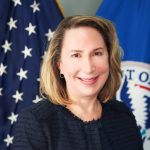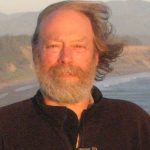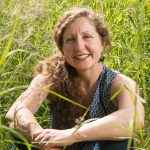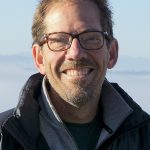New Alaska roadless rule threatens Tongass deer
By Marc Heller, Published August 19, 2019 at E&E News
CRAIG, Alaska — A dwindling deer population is about to become a flashpoint in the debate over easing logging restrictions in the nation’s largest national forest.
Conservationists and Alaska Native tribes say deer — a big part of tribes’ diets — are in decline on Prince of Wales Island in the Tongass National Forest due to past timber industry practices. They plan to make that a rallying cry in uniting tribes against the Trump administration’s proposal to ease limits on logging in roadless areas of the national forest.
“Our deer suffer from logging,” said Clinton Cook Sr., president of the Craig Tribal Council, representing a community of about 400 people. Past clear-cutting created open landscapes where trees regenerated so thickly that deer can’t navigate the woods, a condition called stem exclusion that affects as much as million acres of forest around tribal lands, tribal officials said in an interview at their offices.
Cook said the tribe worries that lifting or easing the roadless restrictions, called the Roadless Area Conservation Rule, would open the way to more clear-cutting and repeat mistakes of the past.
They said the threat to deer may be the cause that sparks interest with other southeast Alaska tribes, even in areas not as heavily affected — a hurdle they’ve been unable to cross so far.
Supporters of a more permissive roadless rule, including Senate Energy and Natural Resources Chairwoman Lisa Murkowski (R-Alaska) and Alaska Gov. Mike Dunleavy (R), say restrictions on Forest Service land are squeezing what’s left of a diminished timber industry in southeast Alaska.
The Department of Agriculture is preparing a draft environmental impact statement, which could be released for public comment any day.
Murkowski told E&E News on Friday that she favors a complete exemption for the state and hopes USDA presents it as one of the alternatives it’s considering.
An Alaska-specific roadless rule will be completed in 2020, USDA has said.
Of the nearly 17 million acres in the Tongass, 9.2 million acres is covered by the roadless rule, which dates to 2001.
Timber production has averaged around 35 million board feet; the Forest Service sets the maximum allowed at 46 million board feet, still a small fraction of what was logged in the 1970s, for instance.
The Tongass is the biggest national forest; Prince of Wales is the fourth biggest island in the U.S., and it’s been a major source of timber for the state’s wood products industry.
“We shouldn’t have had the roadless rule in the first place,” said Murkowski, who has said the Tongass and Alaska are different from any other state because of the forest’s economic impact. “We cannot live with the roadless rule as it is.”
The industry’s woes have grown so severe that Murkowski said she supports temporary subsidies to help southeast Alaska mills hit hard by China’s tariff’s on wood imported from the United States.
Murkowski has also said the issue isn’t entirely about timber but also about public access and other forest industries such as hydroelectricity.
Tribal officials say they’re not anti-timber, and logging has provided income for tribes in the past, through both logging jobs and revenue from harvested trees.
But in Craig, officials said the latest moves promise them more harm than good by threatening habitat for fish and deer. A single buck can yield as much as 45 pounds of venison, which is common enough in the region to be offered as a pizza topping.
“We get our own meat. We get our own fish. We get our own shellfish,” Cook said. “Even if we could buy it in the store, we wouldn’t because we like ours better.”
Conservationists say they’ve noted the decline in deer for several years. And while a rebounding population of wolves that prey on deer plays a role, they said, habitat is a bigger factor.
“I believe the key issue for deer is habitat and declining habitat values as a result of the high level of logging on the island,” said John Schoen, a retired wildlife ecologist in Anchorage and chairman of the Audubon Alaska board. “The interrelationships of predation from wolves, black bears and hunting of deer all complicate the situation and increase pressure on deer populations.”
Schoen added, “Further logging of old growth on Prince of Wales and exempting the Tongass from the roadless rule will further increase risks to deer populations there. Although deer will not be eliminated from the island, their numbers will likely be reduced to the point where it will impact people’s opportunity for successful hunting.”
The loss of old-growth forest further hurts deer by encouraging heavy snow cover, said Dominick DellaSala, chief scientist at the Geos Institute in Ashland, Ore., who favors ending most old-growth logging in national forests. The big canopy of old-growth trees holds snow, allowing for better wildlife habitat below, he said.
The shortage of deer on Prince of Wales comes as the region also deals with disappointing salmon runs. The first significant rain this month didn’t fall in Juneau until last week, and locals say streams that should be full of water are shallow or nearly dry. That prevents salmon from swimming upstream to spawn.
Forestry experts in Alaska say most stakeholders agree that large-scale clear-cutting was a mistake from a forest management and environmental perspective and sacrificed wildlife habitat.
Fixing the problem now is a more complex issue, with some people calling for no clear-cutting and others calling for a more limited approach that targets scattered patches of perhaps 10 acres each. The Forest Service is caught in the middle, pulled by a mix of scientific and political interests.
Areas already showing stem exclusion pose yet another challenge.
The Craig tribe opposes pre-commercial thinning of forests, favoring instead letting nature work its course over decades, said Mike Douville, a member of the Tribal Council.
In nearby Hoonah, another tribal association is girdling younger trees — killing them by sawing around the trunk — to help the forest gradually thin out.
“The deer are definitely using it,” said Ian Johnson, environmental coordinator for the Hoonah Indian Association. The method is also helpful for growing blueberries, another part of the tribal diet, he said, and it helps make harvestable trees in the years ahead, part of a balanced approach to timber- and non-timber-related sources of subsistence.
“They’re both important. It’s just a question of diversifying what the forest can offer here,” Johnson said.
Reporter Geof Koss contributed.
Join the Cornerstone Network
Sign up with a monthly donation and become part of our Cornerstone Network. Network members recieve the messages posted here first, delivered directly to your inbox. Your ongoing support is the foundation of our work.

 Samantha Medlock is President of Climate Risk Advisors, helping communities and organizations advance equity, sustainability, and resilience. Her career began chasing floods as a local official in Texas Flash Flood Alley—a hands-on experience that still shapes her approach to climate and disaster risk management.
Samantha Medlock is President of Climate Risk Advisors, helping communities and organizations advance equity, sustainability, and resilience. Her career began chasing floods as a local official in Texas Flash Flood Alley—a hands-on experience that still shapes her approach to climate and disaster risk management.
 Arsum is the Senior Adaptation and Coastal Resilience Specialist for the National Wildlife Federation’s Southcentral Region. In this role, she advances climate adaptation efforts, with a focus on nature-based approaches to address the impacts of climate change and extreme events across the Gulf region. She has authored and co-authored numerous publications on climate impact assessments and adaptation solutions. Additionally, she regularly participates in state-based coastal resilience and hazard mitigation planning across the Gulf, collaborating with regional and local stakeholders.
Arsum is the Senior Adaptation and Coastal Resilience Specialist for the National Wildlife Federation’s Southcentral Region. In this role, she advances climate adaptation efforts, with a focus on nature-based approaches to address the impacts of climate change and extreme events across the Gulf region. She has authored and co-authored numerous publications on climate impact assessments and adaptation solutions. Additionally, she regularly participates in state-based coastal resilience and hazard mitigation planning across the Gulf, collaborating with regional and local stakeholders. Frank is the former President of the Reinsurance Association of America. Frank currently serves on the Advisory Board of the OECD’s International Network for the Financial Management of Large-Scale Disasters, the RAND Center on Catastrophic Risk Management and Compensation, and the University of Cincinnati’s Carl H. Lindner III Center for Insurance and Risk Management Advisory Board.
Frank is the former President of the Reinsurance Association of America. Frank currently serves on the Advisory Board of the OECD’s International Network for the Financial Management of Large-Scale Disasters, the RAND Center on Catastrophic Risk Management and Compensation, and the University of Cincinnati’s Carl H. Lindner III Center for Insurance and Risk Management Advisory Board. Jim is a multilingual world traveler. Based in Bavaria during the 1970s, Jim spent most of this period in India, Afghanistan and Nepal, where he founded and operated a charitable medical clinic serving Tibetan Refugees. He settled in Oregon in 1983 on a forested ranch in the Umpqua National Forest.
Jim is a multilingual world traveler. Based in Bavaria during the 1970s, Jim spent most of this period in India, Afghanistan and Nepal, where he founded and operated a charitable medical clinic serving Tibetan Refugees. He settled in Oregon in 1983 on a forested ranch in the Umpqua National Forest. Dr. Micah Hahn is an Associate Professor of Environmental Health in the Institute for Circumpolar Health Studies at the University of Alaska-Anchorage. She received her joint PhD in Epidemiology / Environment and Resources from the University of Wisconsin-Madison and her MPH in Global Environmental Health from Emory University. Subsequently, she was a postdoctoral fellow for the CDC Climate and Health Program, and in this position worked collaboratively with the CDC Division of Vector-borne Diseases and the National Center for Atmospheric Research. Her research focuses on understanding the health impacts of climate change and working with communities to develop locally-relevant adaptation and resilience-building strategies. Dr. Hahn is also on the Management Team of the Alaska Climate Adaptation Science Center.
Dr. Micah Hahn is an Associate Professor of Environmental Health in the Institute for Circumpolar Health Studies at the University of Alaska-Anchorage. She received her joint PhD in Epidemiology / Environment and Resources from the University of Wisconsin-Madison and her MPH in Global Environmental Health from Emory University. Subsequently, she was a postdoctoral fellow for the CDC Climate and Health Program, and in this position worked collaboratively with the CDC Division of Vector-borne Diseases and the National Center for Atmospheric Research. Her research focuses on understanding the health impacts of climate change and working with communities to develop locally-relevant adaptation and resilience-building strategies. Dr. Hahn is also on the Management Team of the Alaska Climate Adaptation Science Center. Michael is a former Founding Principal of Resilient Cities Catalyst, a global non-profit helping cities and their partners tackle their toughest challenges. He is currently the Executive Director of Climate Resilience Academy at the University of Miami.
Michael is a former Founding Principal of Resilient Cities Catalyst, a global non-profit helping cities and their partners tackle their toughest challenges. He is currently the Executive Director of Climate Resilience Academy at the University of Miami. Dr. Quintus Jett is a consultant, educator, and strategist for public causes. He has a doctorate in Organizations & Management from Stanford University, and a two-decade faculty career which spans schools, departments, and programs of business, engineering, liberal studies, divinity, and public and nonprofit management. Following Hurricane Katrina in 2005, Dr. Jett launched a volunteer project in New Orleans, which enlisted residents, students from over a dozen colleges and universities, and hundreds of others to field map the city’s Gentilly district, Lower Ninth Ward, and New Orleans East. Dr. Jett is an innovator in higher education, bridging the divide between academic research and the other priorities of the modern university, including student access and diversity, community engagement, and providing foundations for life-long learning in today’s rapidly changing world.
Dr. Quintus Jett is a consultant, educator, and strategist for public causes. He has a doctorate in Organizations & Management from Stanford University, and a two-decade faculty career which spans schools, departments, and programs of business, engineering, liberal studies, divinity, and public and nonprofit management. Following Hurricane Katrina in 2005, Dr. Jett launched a volunteer project in New Orleans, which enlisted residents, students from over a dozen colleges and universities, and hundreds of others to field map the city’s Gentilly district, Lower Ninth Ward, and New Orleans East. Dr. Jett is an innovator in higher education, bridging the divide between academic research and the other priorities of the modern university, including student access and diversity, community engagement, and providing foundations for life-long learning in today’s rapidly changing world. Scott is Monfort Professor of Atmospheric Science at Colorado State University. He has written about 100 publications in the peer-reviewed climate literature, is a former editor of the Journal of Climate, and served for five years as founding Science Chair of the North American Carbon Program.
Scott is Monfort Professor of Atmospheric Science at Colorado State University. He has written about 100 publications in the peer-reviewed climate literature, is a former editor of the Journal of Climate, and served for five years as founding Science Chair of the North American Carbon Program. Linda has many years of experience in disaster preparedness and resilience. She has been an elected official on the Linn County Iowa Board of Supervisors, Chair of the Metropolitan Planning Organization, the East Central Iowa Council of Governments, the statewide Mental Health Developmental Disability and the Linn County Board of Health. Langston is a former president of the National Association of Counties (2013-2014).
Linda has many years of experience in disaster preparedness and resilience. She has been an elected official on the Linn County Iowa Board of Supervisors, Chair of the Metropolitan Planning Organization, the East Central Iowa Council of Governments, the statewide Mental Health Developmental Disability and the Linn County Board of Health. Langston is a former president of the National Association of Counties (2013-2014). Ken works with families and organizations as a mediator, organizational consultant, trainer and facilitator. Along with his passion for helping people prepare for and reduce climate change, Ken also volunteers as a mediator through Mediation Works and is passionate about supporting youth through mentoring with Boys to Men of Southern Oregon.
Ken works with families and organizations as a mediator, organizational consultant, trainer and facilitator. Along with his passion for helping people prepare for and reduce climate change, Ken also volunteers as a mediator through Mediation Works and is passionate about supporting youth through mentoring with Boys to Men of Southern Oregon. Matthew is a retired high school teacher who was once honored as Oregon High School Social Studies Teacher of the Year. Before his teaching career he was in the restaurant business in Portland. He is also a lawyer who has been a member of the Oregon State Bar Association since 1980.
Matthew is a retired high school teacher who was once honored as Oregon High School Social Studies Teacher of the Year. Before his teaching career he was in the restaurant business in Portland. He is also a lawyer who has been a member of the Oregon State Bar Association since 1980. Andrea is the Resilience Policy Advisor for the North Carolina Office of Recovery and Resiliency. She works across state agencies and with local governments to increase the state’s resilience to the impacts of climate change.
Andrea is the Resilience Policy Advisor for the North Carolina Office of Recovery and Resiliency. She works across state agencies and with local governments to increase the state’s resilience to the impacts of climate change.